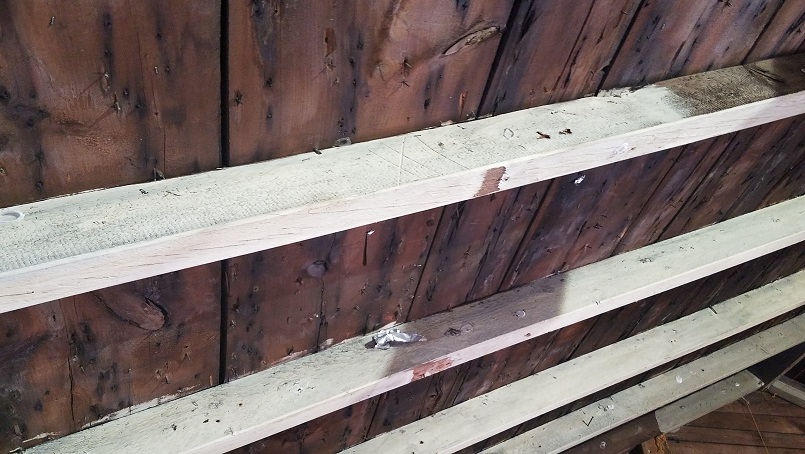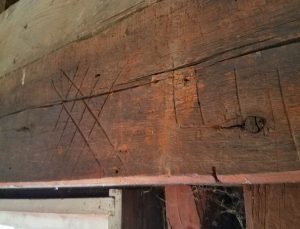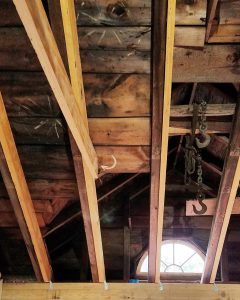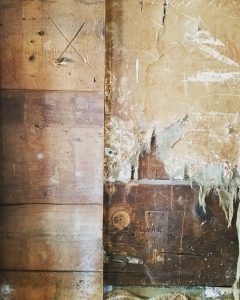
May 30, 2017 Deciphering the Maker’s Marks at the Fowler Clark Epstein Farm
 In the process of reinforcing the structure of the Fowler Clark Epstein Farm’s Barn, we found what are commonly known as “Carpenter Marks“, roman numeral marks that appear throughout the interior timbers of early frame structures and are thought to mark the timbers on the ground for ease of assembly.
In the process of reinforcing the structure of the Fowler Clark Epstein Farm’s Barn, we found what are commonly known as “Carpenter Marks“, roman numeral marks that appear throughout the interior timbers of early frame structures and are thought to mark the timbers on the ground for ease of assembly.
The practice of marking timbers is ancient, found in medieval structures  throughout northern Europe and in early North American buildings and appearing in all forms of framing and in early furniture. While most appear as framing marks or “marriage marks” to mark and match the placement of timbers, or mark the spot for cutting joints and boring peg holes, there is some belief that other ancient markings in both Europe and America were apotropaic marks or “witches marks”, meant to keep harm away.
throughout northern Europe and in early North American buildings and appearing in all forms of framing and in early furniture. While most appear as framing marks or “marriage marks” to mark and match the placement of timbers, or mark the spot for cutting joints and boring peg holes, there is some belief that other ancient markings in both Europe and America were apotropaic marks or “witches marks”, meant to keep harm away.
 Overlapping V’s, the letter M or MR are thought to be references to the Virgin Mary and have been found in 17th and 18th century buildings in England and the eastern United States. Daisy wheels or hexes appear in houses and barns and on gravestones in both the Mid-Atlantic states and in New England. They are often found at points of entry, like windows and doors, like the hexes found above the fireplace at the Winslow House in Marshfield MA.
Overlapping V’s, the letter M or MR are thought to be references to the Virgin Mary and have been found in 17th and 18th century buildings in England and the eastern United States. Daisy wheels or hexes appear in houses and barns and on gravestones in both the Mid-Atlantic states and in New England. They are often found at points of entry, like windows and doors, like the hexes found above the fireplace at the Winslow House in Marshfield MA.
The Fowler Clark Epstein Farm’s barn has many carpenter roman numerals that appear to have a functional purpose. There are additional X markings on the barn’s original doors within the barn where the name “Clark” appears several times in finely carved font with serifs, a remnant of the Clark family’s 100 years here.
While we found no elaborate carvings that might suggest the Clarks were worried about witches and bad luck, we have found some white painted circles on the barn’s ceilings that have no obvious purpose. Our rational minds think they might be have something to do with the proportions of the semi-circular window nearby, but who knows? They might be a vernacular hex, a daisy wheel or ritual circle.
some white painted circles on the barn’s ceilings that have no obvious purpose. Our rational minds think they might be have something to do with the proportions of the semi-circular window nearby, but who knows? They might be a vernacular hex, a daisy wheel or ritual circle.



